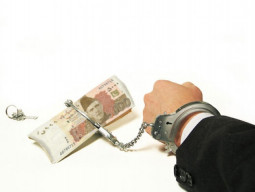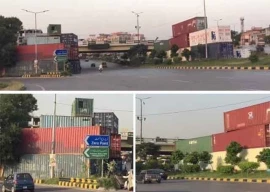
Everyday around five to six teenage suicide attempts are taking place in the city.
Last year, around 1,153 people attempted suicide across Pakistan and 2,131 were successful. HRCP cites data from the National Poison Control Centre in Karachi which receives five or six cases in which people have deliberately tried to ingest poison to end their lives. About 60% of all reported cases are of teenage girls whose families do not want to register the cases as attempted suicide.
HRCP Chairperson Zohra Yusuf said that young women are committing suicide because they are unable to cope with the pressure of everyday life. “Factors such as poverty and forced marriage are making young women commit suicide,” she said.
Law and order
Apart from deliberate self harm, around 1,715 people were killed in Karachi last year, making it the most violent city of the country. Four months, from May to August, were the deadliest because of ethnic, sectarian and political violence and 906 people were killed. July was the deadliest month of 2011 as 355 people lost their lives. Kidnappings in Karachi went up with 125 cases reported - the highest in the decade.
Women and children
Out of the 943 honour killings reported across Pakistan, the majority of cases were in Sindh. But there has been a downward trend of domestic violence here.
Around 2.4 million children were affected by the floods in Sindh, and 30% are malnourished, said the HRCP. Out of 15 child marriages in Pakistan, five were reported from Sindh. In Karachi, around 32,000 children are living on the streets.
Jails and enforced disappearances
While the most crowded prisons were found in Punjab, in Sindh the situation was no better. Its 26 prisons held 13,931 prisoners but are only supposed to have 10,560. The HRCP states that 330 people were sent to death row. No psychological treatment was given for patients at Karachi Central Prison - there was one psychiatrist for 3,700 prisoners.
While Balochistan bore the brunt of enforced disappearances, in Sindh 20 cases were reported mostly of nationalists. Nine people were traced and four were freed from detention. Five were picked up from Larkana, four from Nawabshah and three from Badin.
Health
Dengue claimed 17 lives in Sindh last year and infected around 1,053 people. Polio infected 33 people, up from 27 the previous year. Up to five million people caught malaria in flood-hit areas in Sindh. The HRCP added that the Sindh Private Hospital and Clinics Regulatory Bill has been pending in the Sindh Assembly.
Education
In Sindh, only 16% of rural women completed primary school. Quoting a study by AKU-IED, the report said that in seven districts of Sindh, 70% of school teachers only taught for 15 minutes.
Housing
Half of Karachi lives in unplanned settlements which do not have proper sewerage, electricity or other utilities. Several fires were reported in them - 170 huts were destroyed last year. Severe flooding destroyed about 700,000 houses.
Refugees
Around nine million people were displaced or affected by the floods in Sindh. Out of the 0.091 million Afghan refugees in Sindh, only 769 families and 3,223 individuals were repatriated from Pakistan.
When the calamity hit, 768,457 of people were moved to relief camps and stayed there till the end of the year. Over 6,000 still live in camps.
Published in The Express Tribune, March 29th, 2012.
COMMENTS (11)
Comments are moderated and generally will be posted if they are on-topic and not abusive.
For more information, please see our Comments FAQ

















Is poison the only way to attempt a Suicide? an institute like HRCP should be more professional about such things.
Secondly - putting a gender angle to a much bigger economic and social meltdown actually belittles the problem at hand. Would be really great that instead of spreading sensationalism ET would focus on the core of the problem....
sad state of affairs. vhere is the government?
Thousands of cases are not reported. The hrcp is mentioning only figures which have been reported as earlier said that families of girl who's girl come to the national center for carses of poisoning do not wish to report them.
the figures are the ones reported. 1,513 cases of attempt sucidie ewere reported, the the 2,000 were reported
@CK you parents really wasted millions on your education :P
@CK: yes. i saw this too. But then i thought maybe they meant 1,153 people were unsuccessful at their attempt...
@CK: Please emphasis on topic if your parent spend million of rupees on your education and you extract only clerical mistake then iam sure they wasted money.
The champions politician of karachi live in UK this is the side effect of your politics
@CK the numbers are divided between attempted and successful.attempted means not successful!
ET editorial section wake up before publishing such incorrect info
Qoute
"1,153 people attempted suicide across Pakistan and 2,131 were successful
Unqoute
@CK: They're two separate figures - the successful suicides are not a subset of attempted suicides. Think of it this way: The number of suicide attempts, along with successful suicides, equals 2131+1153. But yes, I agree with you - the writer could have phrased this better.
1,153 people attempted suicide across Pakistan and 2,131 were successful. Either the numbers don't make sense or my parents just wasted millions on my education.